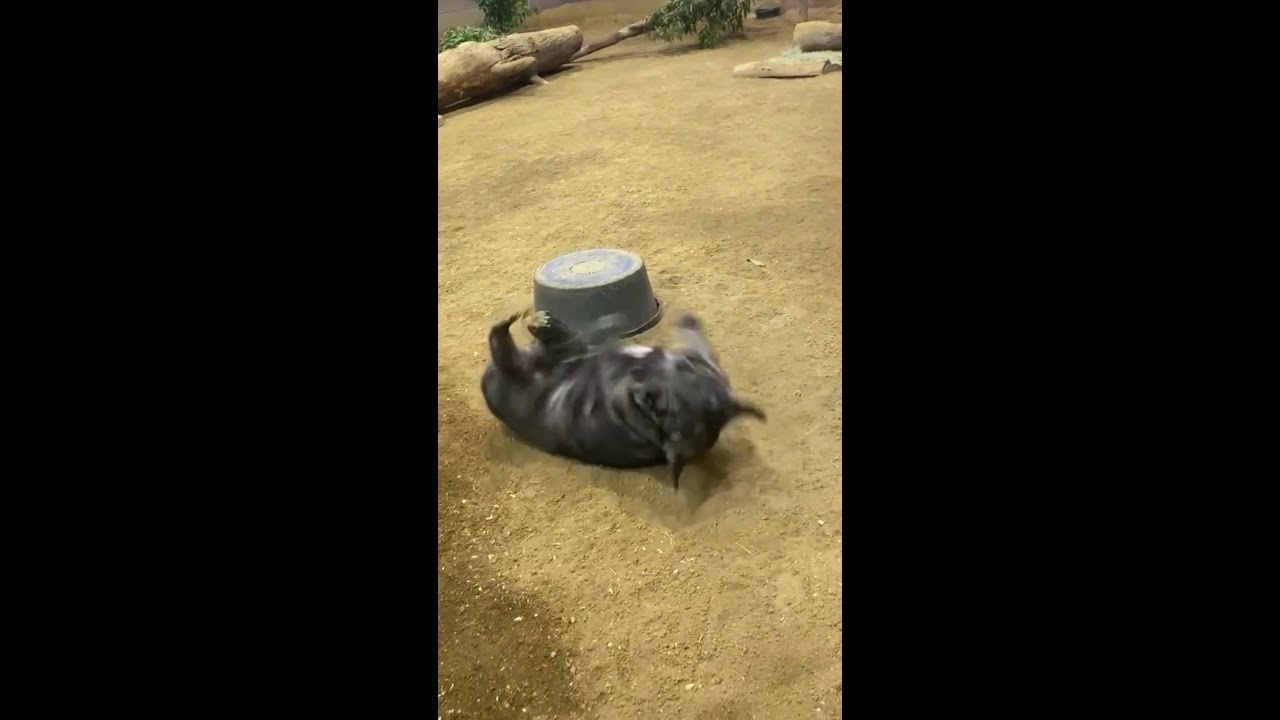Summary:
– Introducing the three southern hairy-nosed wombats at the L.A. Zoo: Olga, Murray, and Richard.
– The unique characteristics and natural behaviors of wombats.
– The importance of conserving and breeding wombats.
– The fascinating phenomenon of “Wombat Zoomies” and its significance.
– Celebrating #WombatDay and the joy these marsupials bring.
If you’ve ever enjoyed visiting the L.A. Zoo, you may have been lucky enough to glimpse the three southern hairy-nosed wombats that call it home. Look at these adorable marsupials and uncover some fascinating aspects of their lives. Get ready for an exciting adventure into the world of the Wombat Zoomies and the upcoming #WombatDay celebration!
Meet Olga, Murray, and Richard – three incredible ambassadors at the L.A. Zoo. Olga, the youngest of the trio, arrived in 2016 from the Adelaide Zoo as part of a breeding recommendation from the Species Survival Plan. At 10 years old, she has become a beloved member of the zoo’s animal family. Murray, the oldest, was the first southern hairy-nosed wombat to find a home at the L.A. Zoo. At 13 years old, he has paved the way for his species’ conservation efforts. Finally, we have Richard, the five-year-old offspring of Olga and Murray, who carries their legacy into the future.
Wombats are truly remarkable creatures. Native to Australia, these furry marsupials have unique characteristics and behaviors that make them stand out. One of the most striking aspects of a wombat’s appearance is its cube-shaped feces. Yes, you read that right – cube-shaped! This unusual adaptation allows their droppings to stay in place, marking territory and communicating with other wombats without rolling away.
But that’s not all – wombats are expert burrowers. Using their powerful claws and strong teeth, they create complex underground tunnels and chambers, providing them shelter and protection from predators. Their burrow systems can extend up to 100 feet, with multiple entrances and chambers for different purposes. These intricate networks of tunnels are a testament to the resourcefulness and intelligence of these remarkable creatures.
Conservation and breeding efforts play a crucial role in ensuring the survival of wombats, especially considering their vulnerability in the wild. Loss of habitat and disease pose significant threats to their population. By housing wombats like Olga, Murray, and Richard, the L.A. Zoo actively contributes to conservation initiatives and educates visitors about the importance of protecting these unique animals.
Now, let’s dive into the world of “Wombat Zoomies,” a phenomenon that brings sheer joy to anyone fortunate enough to witness it. Wombat Zoomies refer to the sudden burst of energy and exuberant movements displayed by these marsupials. Imagine a fuzzy ball of fur dashing and spinning around their enclosure with unbridled enthusiasm. It’s an awe-inspiring sight that brings smiles to the faces of zoo visitors.
What triggers the Wombat Zoomies, you may wonder? Well, it’s all part of their natural behavior. Wombats are known for being crepuscular, meaning they are most active during twilight. But sometimes, they can’t contain their excitement and engage in these exhilarating zoomies, regardless of the time of day. Whether it’s a burst of happiness, the thrill of exploring their environment, or just a playful moment, watching wombats zoom around is a delightful experience that sparks wonder and entertainment.
As we approach #WombatDay, a celebration dedicated to these lovable creatures, it’s the perfect opportunity to reflect on their significance in our lives. Beyond their cuteness and amusing antics, wombats are vital in our ecosystem. They contribute to soil health by digging burrows that aerate and improve the quality of the land. Their grazing habits also help manage vegetation, influencing the overall balance of ecosystems.
So, how can we join in the celebration of #WombatDay? Firstly, spread the word about these underrated marsupials. Share their unique characteristics, important role in nature, and the efforts to conserve their populations. Secondly, consider supporting organizations and initiatives that focus on wombat conservation. Every action, big or small, can make a difference in protecting these incredible animals and their habitats.
In conclusion, the Wombat Zoomies and the upcoming #WombatDay offer us a chance to appreciate and celebrate the wonders of nature. Olga, Murray, and Richard, the three southern hairy-nosed wombats at the L.A. Zoo, have become ambassadors for their species, captivating visitors with their natural behaviors and adorable appearances. Let’s continue to learn, explore, and advocate for the conservation of wombats and all the incredible wildlife that shares our planet.
*****
Source Description
Olga is coming in hot for #WombatDay! Three southern hairy-nosed wombats call the L.A. Zoo home: Olga, Murray, and Richard. Olga is 10 years old and arrived in 2016 from the Adelaide Zoo as a part of a Species Survival Plan breeding recommendation. Murray is the oldest at 13 years old and was the first of this species to be housed at the L.A. Zoo. Together, they produced Richard, who is now 5 years old. “These three wombats are fantastic ambassadors,” says Senior Animal Keeper Kevin Gorowski. Guests are often delighted spotting this adorable marsupial in the nocturnal Australian house, where they exhibit natural behaviors such as burrowing, foraging, dust-bathing, and playing.
#Wombat #Marsupial #Zoomies
🎥: Animal Keeper Andrea Delegal


